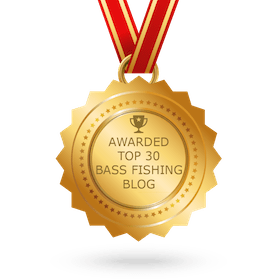IN THE EYES OF THE BEHOLDER
By Ron McDonald, Editor & Publisher Southern Fishing News
We have all heard the old story that a few lure colors are made to catch fishermen, not fish. This “phenomenon” applies primarily to hard plastic lures, soft plastic lures, and probability skirted jigs.

I am not sure that story is always true because lure manufacturers will stop making a color that does not produce for anglers and thus does not sell. But, I must admit, on occasion, an attractive lure color in the tackle shop has “caught me” and, so far, has not caught a fish (that could also be attributed to my skill or lack thereof). 🙂 However, they do look pretty in my tackle box.
I’ll go out on a limb here and say our favorite color lure that consistently catches fish may not be because of the great color we see but rather how the bass interprets the color and “likes” it. In that case, a lure color that “caught the angler” may well catch bass if that color(s) is “translated positively” by the color vision of a bass.
…bass have two sets of cones in their eyes
evolved to see red and green.
Of course, notwithstanding, the time of year, the kind of food available, water temperatures, water clarity, and experience will usually influence our choice of colors. But have you ever wondered how a bass interprets those lure colors underwater? Let’s take a look at that question.
With us bass anglers (humans in most cases), three types of cone cells are responsible for the early stages of color vision (trichromatic vision). Each type of cone cell is maximally absorbent in a different part of the color spectrum – short, medium, and long wavelengths of light (now stay with me). These are typically named red, green, and blue cones, respectively (called RGB on a computer screen), to describe how humans perceive light at each cone’s peak absorbency. This means we see the great color of baits in the tackle store quite differently than how a bass will see the colors (with dichromatic vision) underwater. Simply stated, anglers see the color of a lure differently than a bass.

Damon Lee Abernethy, Assistant Chief of Fisheries, Alabama Wildlife & Freshwater Fisheries said, “Based on my fishing experience shad don’t change color. So why should my baits? Bream look like bream and shad look like shad, all the time, no matter what the watercolor or depth may be. So, I quit venturing very far from their natural color patterns. In muddy water fish turn almost white. In really clear water their colors can be a lot more vivid. Nevertheless, they still look like whatever they are. I think that’s what bass are looking for. However, I vividly remember my granddaddy spanking my butt on Pickwick with a firetiger Humpback Rebel, so I know there’s a lot more to it!”
According to one study conducted by Oxford Academic, the dichromatic vision of bass can distinguish certain colors. The study found that bass have two sets of cones in their eyes evolved to see red and green. Bass can distinguish between red and green color combinations and shades of those two colors quite well. However, bass cannot distinguish between the colors of black, blue, and brown according to the study. Those colors all look the same to a bass (guess I’ll have to start cleaning out half of my crankbaits, worms, and jigs!). I am not sure where that puts white, bone, metallic silver, metallic gold, and prism-colored lures.

Color Wheel
Graphic designers (myself included) sometimes use what is called a “color wheel” to select primary colors (RGB) and complementary colors for a project (complimentary colors are located directly across the color wheel of the color being considered as the dominant color). Take a look at the color wheel to see the representative spectrum of red and green that bass can perceive (don’t go too far on the wheel either way though).
The color perception of a bass is more limited in murky and stained water. In murky water, bass rely more on their lateral line (for vibrations), and taste receptors, to detect prey. The two types of color receptors in their eyes affect their ability to distinguish between certain colors even in clear water. We know bass cannot see in complete darkness. During periods of darkness, they rely on their other senses that allow them to detect vibrations and movements in the water to navigate and find prey in low-light conditions.
Dr. Rusty Wright, Associate Professor – Extension Specialist, School of Fisheries, Auburn University, said (based on his quick review of past research), “It appears that contrast may be more important than color especially when fishing at a depth where most of the wavelengths of light have been filtered out. The dirtier the water, the more likely that contrast [and vibration] will win out over detail.” So the reduced water clarity at the depth we are fishing degrades the color perception of a bass (OK, maybe this will save some of my baits from being removed from my tacklebox).

Dr. Wright added, “One of the early folks who worked on this relative to fishing was Dr. Loren Hill from Oklahoma back in the 1970s and 80s. [Hill] turned his work into the Color C lector which was basically a photocell that could determine what color of light was penetrating to the depth [as] you lowered the probe.”
Sean Ostruszka said in Major League Lessons, “There are 132 colors of the Yamamoto Senko on the market, but most anglers only throw some version of green pumpkin (which, while we’re on the subject, doesn’t actually look anything like the color of a real green pumpkin). While we have the benefit of viewing the world through clear air, bass view it through water. And most of the time, it’s stained water.”
So there you have it. The next time you go shopping for lures you can impress (or confuse) your buddy by saying, “I am making my color selection based on the translation of trichromatic vision to dichromatic vision.” Huh?












Can my color selector be fixed? If so who could I send it to?
January 16th, 2024
I only been fishing for a few years but never seen a bass or bluegill turn down a minnow….if I had to narrow it down, it would be red (crawfish), green pumpkin (bluegill), silver (minnow) in clearer water….white and some sort of silver in waters that aren’t as clear. Because the light can’t penetrate murky water, the pigment of the fish in that water are lighter thus the white/bone like color of baits. Not sure where chartreuse comes in at but its known to work
January 16th, 2024
This was a well written article! Ongoing research expands our bass fishing knowledge quite vastly!
January 16th, 2024
So is the article saying to just use red or green or white,maybe silver too? Plus something that creates sound/vibration. That really just eliminates nothing. Not like they making wierd pink colors that are silent
January 16th, 2024
Where can you get a color wheel?
January 16th, 2024
I enjoyed the article and would like to read more of the same kind of articles. Thank you.
January 16th, 2024
Streamlining colors make sense to save a buck, but what about “Reaction”.
Bass may not care for the color, but attack out of aggression, regardless if they are hungry or being bullish. I have fished in southern and northern states, Eastcoast to Westcoast, dark colors always seem best but white and silver works as an alternative.
HL
45 yrs of bass fishing
January 16th, 2024
I think the article was very helpfull
January 16th, 2024
An art, hobby store like Hobby Lobby or Michael’s is your best bet. I got mine at Hobby Lobby a few years ago. Never thought I’d use it for selecting fishing lures, lol
January 16th, 2024
That was the best Article on Bass fishing that I have Read.
January 16th, 2024